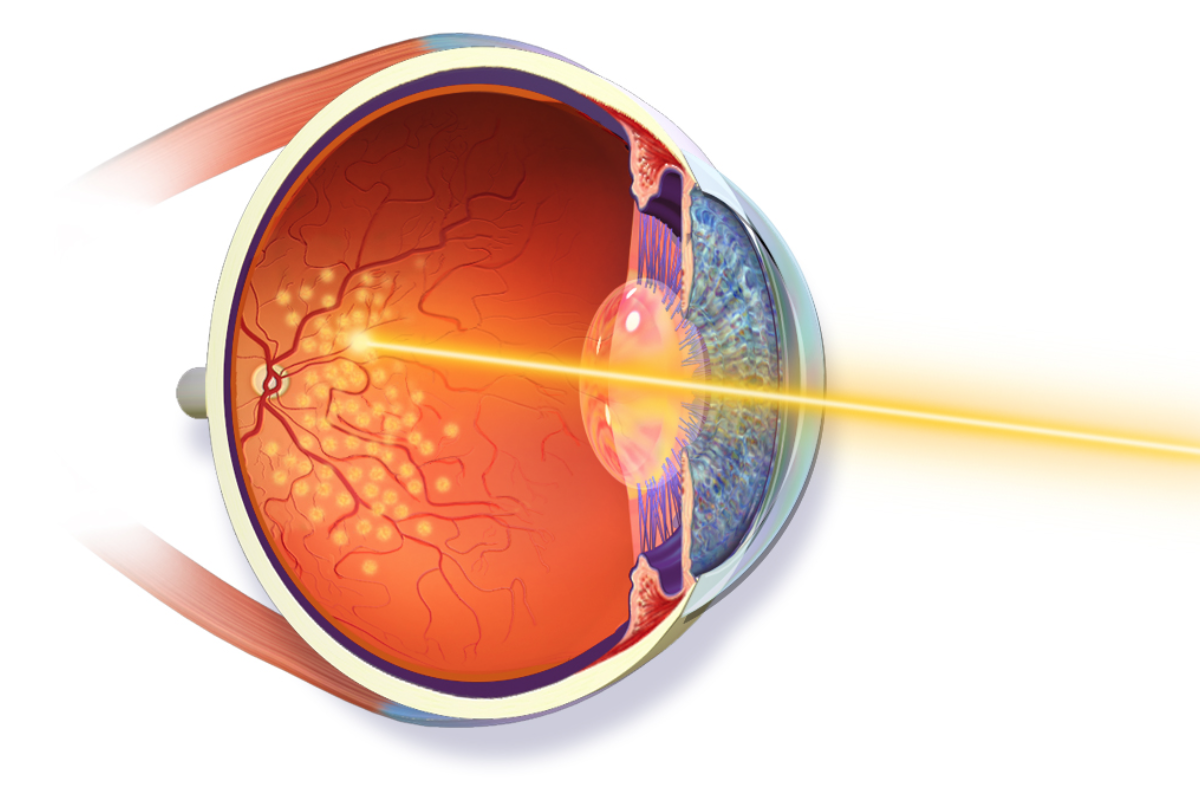Retinal laser photocoagulation is an in-office procedure used to treat a number of retinal conditions, including retinal tears, diabetic retinopathy, macular edema and retinal vein occlusion. It is most frequently used to seal a retinal tear to prevent development of a retinal detachment, a potentially blinding condition. Retinal laser photocoagulation is also used to seal or destroy leaking blood vessels to prevent further retinal damage and preserve sight.
The laser procedure works by creating small areas of scar tissue that can seal off a tear or leaking blood vessels. It can also slow the growth of abnormal blood vessels (neovascularization) in the eye. The procedure cannot typically restore vision that is already lost, but it can reduce your risk of experiencing future vision loss.
What to Expect
Performed in our office, retinal laser photocoagulation may be combined with other retinal procedures, such as cryopexy (freezing) or an eye injection. Your Texas Retina Associates doctor will determine the best treatment plan for your specific condition. The procedure itself typically takes about 15 minutes.
We begin a retinal laser photocoagulation procedure by placing drops in your eye to numb it and dilate your pupil. In addition, a special contact lens may be placed on the front of your eye to precisely focus the laser for treatment. Your retina physician will then use the laser to make small burns to targeted areas, creating scar tissue that can seal off a retinal tear, halt leaking blood vessels or slow the growth of abnormal blood vessels, depending on your specific condition.
You may experience bright flashes of light or feel a pinprick sensation as the laser is applied. Your retina surgeon will talk to you throughout the procedure to ensure you remain as comfortable as possible. If extensive laser treatment is necessary, an outpatient procedure with mild sedation at a surgery center may be recommended.
After Retinal Laser Photocoagulation
You will need to arrange for someone to drive you home after your retinal laser photocoagulation procedure as your eyes will remain dilated, and your vision may be blurry. You may experience mild pain in the treated eye for a day or two, and your doctor may advise a brief period of limited activity before resuming your normal activities.
To watch a video about retinal laser photocoagulation treatment for retinal tears, click here or for laser treatment of diabetic retinopathy or macular edema, click here.


